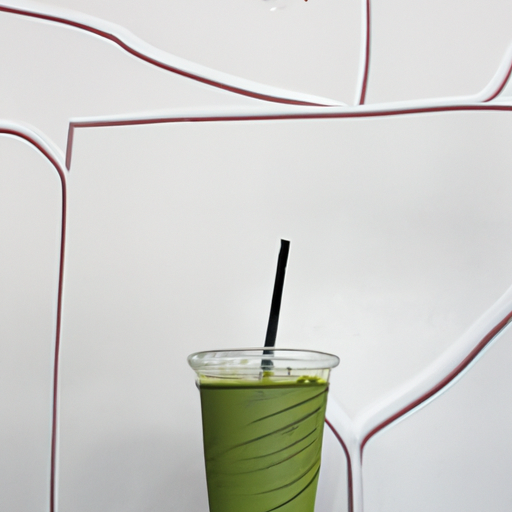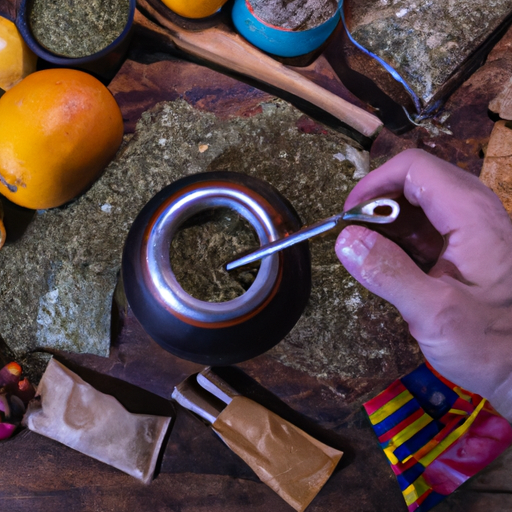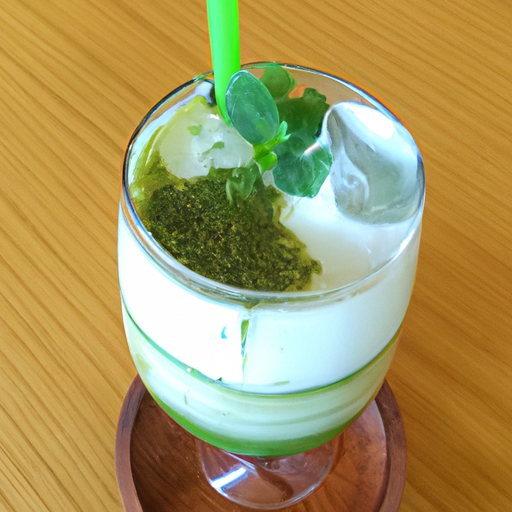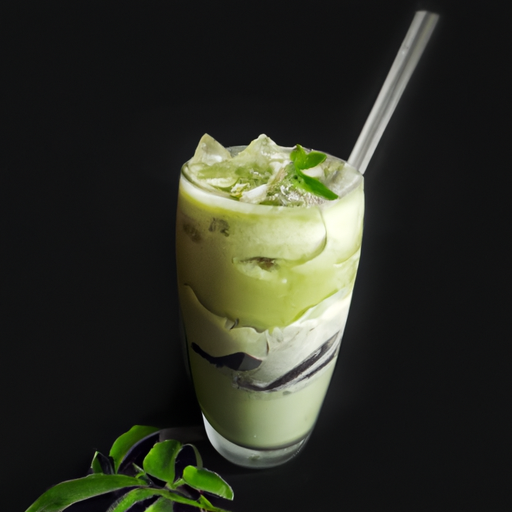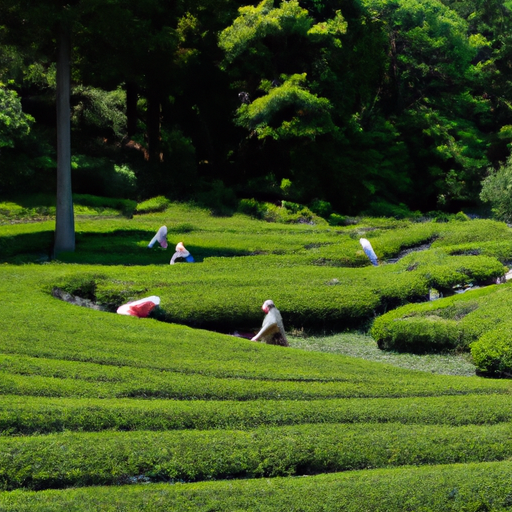Being a tea enthusiast, I am constantly in search of fresh and intriguing flavors to explore. Recently, my curiosity has been captured by matcha milk tea. However, before I indulged in my initial taste, I couldn’t help but ponder: what is the flavor profile of matcha milk tea like?
Matcha milk tea is a delicious and creamy beverage that combines the earthy, grassy flavor of matcha with the sweetness of milk. The flavor profile is unique and complex, with notes of umami, sweetness, and a slight bitterness.
As someone who has tried many different types of tea, I was excited to explore this beverage and discover all of its nuances. So, if you’re curious about matcha milk tea, let’s dive in and explore this delicious drink together.
Key Takeaways
- Matcha milk tea has a unique flavor profile with notes of umami, sweetness, and slight bitterness.
- The creaminess of milk complements the taste of matcha, and milk alternatives such as almond or coconut milk can also be used.
- Quality ingredients and the right amount of sweeteners and flavorings are important to create a balanced and flavorful drink.
- The frothy and velvety texture of matcha milk tea plays a crucial role in creating a satisfying and enjoyable experience.
What is Matcha Milk Tea?
If you haven’t tried matcha milk tea yet, you’re missing out on a creamy, frothy, and uniquely delicious beverage.
Matcha milk tea is a Japanese drink that has been gaining popularity in recent years. It is made by combining matcha powder with milk and sweetener.
Matcha powder is made from ground green tea leaves, which have been shade-grown to increase chlorophyll production, resulting in a vibrant green color. Matcha milk tea has a long history in Japan, where it has been consumed for centuries as part of traditional tea ceremonies.
The origins of matcha can be traced back to China, where green tea was first cultivated. However, it was the Japanese who refined the production of matcha and made it a staple in their culture. Today, matcha is enjoyed all over the world for its unique flavor and health benefits.
Brewing matcha milk tea requires a bit of skill and technique. The matcha powder must be whisked vigorously with hot water to create a smooth and frothy mixture. The milk and sweetener are then added to create a creamy, delicious drink.
The quality of the matcha powder and the brewing technique can greatly affect the flavor and texture of the final product. Matcha milk tea has a distinct flavor profile that sets it apart from other teas. It has a rich, vegetal taste with a slight bitterness that is balanced out by the sweetness of the milk and sweetener.
The matcha powder also lends a slightly nutty flavor to the drink. Overall, matcha milk tea is a delicious and unique beverage that is worth trying.
The Flavor Profile of Matcha
You may be surprised by the complex yet delicate notes of umami and herbaceousness present in matcha milk tea. Matcha is known for its unique flavor profile, which sets it apart from other teas. The umami notes in matcha come from the amino acid L-theanine, which gives it a savory taste. Meanwhile, the herbaceousness comes from the chlorophyll in the tea leaves, giving it a grassy and earthy taste.
To better understand the flavor profile of matcha milk tea, let’s take a look at this table:
| Flavors | Taste |
|---|---|
| Umami | Savory |
| Bitter | Earthy |
| Sweet | Delicate |
| Creamy | Smooth |
As you can see, matcha milk tea has a balance of savory, earthy, and delicate flavors that come together to create a unique taste experience. While some people may find the bitter undertones of matcha off-putting, others find it to be an acquired taste that they come to love over time.
Moving on to the creaminess of milk, it’s important to note that adding milk to matcha can help to mellow out the bitter flavors and add a smooth, creamy texture to the drink. This is why many people enjoy matcha as a latte, with milk and a touch of sweetener to balance out the flavors.
The Creaminess of Milk
Adding milk to matcha creates a creamy, smooth texture that enhances the overall taste experience. The creaminess of milk is a perfect complement to the earthy and slightly bitter taste of matcha. It adds a subtle sweetness to the drink, making it more palatable for those who aren’t used to the taste of matcha.
Creaminess is a desirable quality in many beverages, and milk is a popular ingredient used to achieve this texture. It not only improves the mouthfeel of the drink but also balances out the flavors, making it more enjoyable.
While some people prefer to use dairy milk, others opt for milk alternatives such as almond, coconut, or soy milk in their matcha milk tea. When choosing a milk alternative, it’s important to consider the flavor profile of the milk and how it will complement the taste of matcha. Almond milk, for example, has a nutty flavor that can enhance the nuttiness of matcha, while coconut milk adds a creamy richness that pairs well with the earthy notes of matcha.
Ultimately, the choice of milk or milk alternative will depend on personal preference and taste.
As much as the creaminess of milk enhances the flavor of matcha, adding sweeteners and flavorings can take the experience to another level.
Sweeteners and Flavorings
Immerse your taste buds in a world of delightful flavors by exploring the vast array of sweeteners and flavorings that can be incorporated into your matcha milk drink. The taste of matcha milk tea is often described as earthy, slightly bitter, and with a hint of sweetness. However, adding sweeteners and flavorings can transform the taste and take it to a whole new level.
There are various sweetener options that can enhance the taste of matcha milk tea. Some popular ones include honey, brown sugar, agave syrup, and stevia. Each sweetener has a unique taste and can add a different dimension to the drink. For instance, honey adds a floral sweetness, while brown sugar gives a rich, caramel-like flavor.
To create a personalized matcha milk tea, experiment with different flavoring combinations. Some popular choices include vanilla, lavender, rose, and mint. These flavors can be added in the form of syrups, extracts, or even fresh herbs. The possibilities are endless, and you can tailor the flavor to suit your taste buds.
Adding sweeteners and flavorings can make all the difference in the taste of matcha milk tea. However, it’s essential to use quality ingredients to ensure that the flavor is not compromised. The next section will delve into the importance of using high-quality matcha powder and milk to create a delicious and nutritious matcha milk tea.
The Importance of Quality Ingredients
Using high-quality ingredients is crucial for creating a matcha milk drink that’s not only delicious but also packed with nutrients. One of the key factors in creating a balanced and flavorful matcha milk tea is ingredient sourcing.
Quality matcha powder should be sourced from reputable producers who use traditional methods of growing, harvesting, and processing the tea leaves. This ensures that the powder is fresh and free from additives and contaminants that can compromise its flavor and nutritional value.
Another important aspect of creating a great matcha milk tea is achieving the right flavor balance. This requires using quality milk that complements the earthy and slightly bitter notes of matcha powder. Ideally, the milk should be creamy and rich without overpowering the delicate flavors of the tea.
Moreover, the sweetener and flavorings should be added in moderation to avoid masking the natural taste of matcha. By using quality ingredients and achieving the right flavor balance, one can create a matcha milk drink that’s not only delicious but also healthy and satisfying.
The importance of quality ingredients cannot be overstated when it comes to making a great matcha milk tea. Sourcing quality matcha powder and milk, and using the right amount of sweeteners and flavorings can make all the difference in creating a drink that’s rich in flavor, aroma, and texture.
In the next section, we’ll explore the texture of matcha milk tea and how it can be enhanced by incorporating the right ingredients and techniques.
The Texture of Matcha Milk Tea
You don’t want your matcha milk drink to be too smooth and creamy. Who needs a drink that’s easy to swallow and lacks texture? One of the best things about matcha milk tea is the texture analysis that comes with it.
The frothy and velvety texture of the matcha powder mixed with the creamy and slightly thick consistency of the milk alternative creates a drink that is both satisfying and indulgent.
To fully enjoy the texture of matcha milk tea, here are some tips to keep in mind:
-
Sip slowly and let the drink coat your tongue to fully appreciate the smoothness of the milk and the subtle bitterness of the matcha.
-
Take a moment to appreciate the frothy layer on top of the drink, which is created by whisking the matcha powder with hot water before adding the milk alternative.
-
Experiment with different milk alternatives to find the one that suits your taste preference and texture preference. Some popular options include almond milk, oat milk, and coconut milk.
As we move on to discussing the variations of matcha milk tea, it’s important to keep in mind the crucial role that texture plays in creating a satisfying and enjoyable drink.
Variations of Matcha Milk Tea
When it comes to matcha milk tea, there are various ways to enjoy it. Personally, my favorite variations are iced matcha milk tea and matcha milk tea latte.
I love the refreshing taste of the iced version, while the latte provides a creamy and comforting twist.
Both options are delicious and perfect for any time of day.
Iced Matcha Milk Tea
For a refreshing twist on traditional matcha tea, try the iced matcha milk tea, which combines the earthy flavor of matcha with the creamy sweetness of milk. Iced matcha drinks have become increasingly popular in recent years, and for good reason. They offer a cool and refreshing alternative to the hot traditional matcha tea, making it a perfect beverage for the summer months.
Making your own iced matcha milk tea is easy, thanks to DIY matcha milk tea kits that are available in many specialty stores. Simply mix the matcha powder with milk, ice, and sweetener of your choice, and shake well. For those who prefer a stronger matcha flavor, you can adjust the amount of matcha powder used. With its refreshing taste and vibrant green color, the iced matcha milk tea is a must-try for any matcha tea lover. Now, let’s move on to the next section and explore the matcha milk tea latte.
Matcha Milk Tea Latte
If you’re a fan of lattes, you’ll love the matcha milk tea latte. This drink has become a popular choice in coffee shops across the country, and for good reason.
Matcha powder, a finely ground green tea powder, is combined with steamed milk to create a creamy and earthy drink. The matcha powder adds a unique flavor profile to the latte, with its slightly bitter and grassy notes, which are balanced out by the sweetness of the steamed milk. The bright green color of the matcha powder also adds an aesthetic appeal to the drink, making it a popular choice for Instagrammers and social media influencers.
It’s no wonder that the matcha latte is now the second most popular latte flavor in the US, surpassing even caramel and vanilla.
When it comes to pairing with matcha milk tea, there are many options to choose from. Whether you prefer a sweet pastry or a savory snack, there’s a perfect match for your latte.
Pairings with Matcha Milk Tea
When it comes to enjoying a cup of matcha milk tea, I love to pair it with some delicious pastries and sweets. The earthy and slightly bitter notes of the matcha go perfectly with sweet treats like macarons or buttery croissants.
But don’t overlook savory snacks, as matcha also pairs wonderfully with salty snacks like popcorn or roasted almonds. So whether you’re in the mood for something sweet or salty, there’s a perfect pairing for your matcha milk tea.
Pastries and Sweets
Indulging in a warm matcha milk tea latte pairs perfectly with a flaky croissant or a sweet macaron. The earthy and slightly bitter notes of the matcha complement the buttery and sweet flavors of these pastries. For a more decadent treat, try a matcha milk tea affogato, where a scoop of vanilla ice cream is drowned in a shot of matcha milk tea.
The contrast of the hot and cold, bitter and sweet, is a flavor explosion in your mouth. When it comes to pairing suggestions for matcha milk tea pastries and sweets, there are endless possibilities. Matcha cream puffs, green tea Kit Kats, and matcha mochi are just a few examples. The key is to balance the flavors and textures.
Matcha’s earthy taste goes well with creamy and sweet desserts. For savory pastries like sausage rolls or quiches, a cup of matcha milk tea can cleanse the palate and provide a refreshing contrast. But before we move on to savory snacks, let’s not forget about the matcha cheesecake that’s calling my name.
Savory Snacks
After indulging in some pastries and sweets, it’s time to balance out the sugar rush with some savory snacks.
As a fan of matcha milk tea, I love exploring different snacks that pair well with its unique flavor profile.
One of my favorite savory snacks to enjoy with matcha milk tea is roasted seaweed. The umami flavors from the seaweed complement the earthy taste of the matcha, resulting in a satisfying and flavorful combination.
Another great snack to pair with matcha milk tea is edamame. The saltiness of the edamame enhances the sweetness of the matcha, creating a delicious balance of flavors.
When it comes to snacking with matcha milk tea, the possibilities are endless. From rice crackers to miso soup, there are many savory options that can complement the subtle bitterness of matcha.
As someone who enjoys exploring new flavors and cuisines, I’ve found that matcha milk tea pairs well with many Japanese snacks. These snacks not only satisfy my cravings but also provide a unique cultural experience.
As much as I enjoy savoring these snacks with matcha milk tea, I also appreciate the health benefits that come with drinking this beverage.
Without taking a break from the savory snacks, let’s dive into the next section and explore the health benefits of matcha milk tea.
Health Benefits of Matcha Milk Tea
You’ll love the health benefits of matcha milk tea. It includes improved brain function and a boost in metabolism. Matcha milk tea contains a high concentration of antioxidants, which can help reduce inflammation and protect against chronic diseases. Additionally, matcha contains L-theanine, which can improve brain function and reduce stress levels.
In terms of metabolism, matcha milk tea can help increase energy levels and speed up the metabolism due to its high caffeine content. This can lead to increased calorie burning and weight loss over time. Finally, matcha milk tea can also help improve digestion and reduce inflammation in the gut, which can lead to better overall health.
Overall, matcha milk tea is a delicious and healthy beverage that can provide a range of benefits to your body and mind. Whether you enjoy it hot or cold, be sure to use high-quality matcha powder and experiment with different preparation techniques to find the perfect cup for you.
Frequently Asked Questions
What is the origin of matcha milk tea?
So, let me tell you about the origin of matcha milk tea. It has a rich history that dates back to the Tang Dynasty in China, where tea was first used for medicinal purposes.
The production of matcha milk tea involves grinding high-quality green tea leaves into a fine powder, which is then whisked with hot water and milk to create a frothy, creamy beverage. Matcha milk tea has cultural significance in Japan, where it is often used in traditional tea ceremonies.
In addition to its delicious taste, matcha milk tea also offers numerous health benefits, such as being high in antioxidants and promoting relaxation.
Overall, matcha milk tea is a unique and flavorful drink that has a fascinating history and cultural significance.
Can matcha milk tea be made with non-dairy milk alternatives?
Yes, matcha milk tea can definitely be made with non-dairy milk alternatives. I’ve experimented with different types of non-dairy milks in my matcha milk tea, and the taste variations can be quite interesting and delicious.
For example, using almond milk adds a subtle nuttiness to the drink, while coconut milk brings a tropical twist. Oat milk adds a creaminess that pairs well with the earthy flavor of matcha. The possibilities are endless!
So, whether you’re lactose intolerant or simply prefer non-dairy options, rest assured that you can still enjoy a delicious cup of matcha milk tea.
Is matcha milk tea caffeine-free?
Matcha milk tea isn’t caffeine-free, as matcha itself contains caffeine. However, the benefits of matcha far outweigh the small amount of caffeine it contains. Matcha is packed with antioxidants, vitamins, and minerals, making it a great addition to any diet.
There are also various varieties of matcha available, each with their own unique flavor profiles and levels of caffeine. From ceremonial grade matcha to culinary grade matcha, there’s a variety for every taste and preference.
So while matcha milk tea may not be caffeine-free, the benefits and variety of matcha make it a worthwhile addition to your daily routine.
How does matcha milk tea compare to regular milk tea in terms of taste?
When it comes to comparing matcha milk tea to regular milk tea, there are several differences to note. Firstly, matcha milk tea is made with matcha powder, which is a type of green tea that is grown and processed differently than regular green tea. This gives matcha a distinct flavor profile that is earthy, slightly bitter, and has a hint of sweetness.
Regular milk tea, on the other hand, is often made with black tea and flavored with sweeteners like honey or sugar. In terms of sweetness levels, matcha milk tea tends to be less sweet than regular milk tea, as the earthy flavor of the matcha powder is not as easily masked by added sweeteners.
Overall, if you enjoy the taste of green tea and are looking for a less sweet alternative to regular milk tea, matcha milk tea might be worth a try.
Can matcha milk tea be consumed hot and cold?
Personally, I love matcha milk tea both hot and cold. When it’s hot, the creamy sweetness envelops my taste buds and warms my soul. It’s the perfect drink to cozy up with on a chilly day.
On the other hand, when it’s cold, the refreshing sweetness is like a cool breeze on a hot summer day. The sweetness level can vary depending on where you get it, but I prefer mine with a medium level of sweetness.
Regardless of the temperature or sweetness level, the earthy flavor of matcha always shines through. It’s a unique and complex taste that I can’t get enough of.
Conclusion
In conclusion, matcha milk tea is a delicious and unique drink that combines the earthy flavors of matcha with the creaminess of milk. The sweetness and flavorings added to the tea can vary, but the quality of the ingredients is always important in creating the perfect cup.
The texture of the drink is also a key factor, as the frothy top adds a delightful mouthfeel. But beyond the taste, matcha milk tea also offers numerous health benefits, making it a guilt-free indulgence.
From boosting metabolism to providing antioxidants, matcha milk tea is a beverage that can nourish both the body and soul. So whether enjoyed alone or paired with a sweet treat, matcha milk tea is a drink that’s sure to delight and satisfy.

